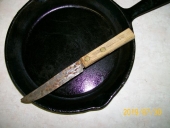




 3
3









 3
3




David Crimmins wrote:So what is the chemical break down of steamed bone meal in vinegar.
If the calcium is dissolved into Ca+ and water where'd the phosphorous go???
- Tim's Homestead Journal - Purchase a copy of Building a Better World in Your Backyard - Purchase 6 Decks of Permaculture Cards -
- Purchase 12x Decks of Permaculture Cards - Purchase a copy of the SKIP Book - Purchase 12x copies of Building a Better World in your Backyard
 3
3








Phil Stevens wrote:Fungi are the key here. Many soils have an abundance of P but it's in one or more insoluble guises and therefore does no good for the plants that need it. Fungi have the tools, such as the ability to secrete acids, that allow it to mine these sources and trade them for sugars in forms useful to plants.
Invasive plants are Earth's way of insisting we notice her medicines. Stephen Herrod Buhner
Everyone learns what works by learning what doesn't work. Stephen Herrod Buhner












 1
1




 2
2




What exactly is "fish hydrolysate" and is it home made or commercial?Phil Stevens wrote:... many of my "regen" buddies in the area are getting great results with fish hydrolysate to stimulate fungal activity...
Visit Redhawk's soil series: https://permies.com/wiki/redhawk-soil
How permies.com works: https://permies.com/wiki/34193/permies-works-links-threads







 2
2




 1
1




 1
1




Phil Stevens wrote:On the stench issue from the application side of things, this same friend went up in a helicopter to spray fish hydrolysate on some run-down hill country paddocks. He said the pilot gagged and nearly passed out from the smell. After I heard that story, I brought him a bag of biochar that had been soaked with the stuff. 24 hours later there was no detectable odor.
 2
2





|
Don't destroy the earth! That's where I keep all my stuff! Including this tiny ad:
Support permies and give beautiful gifts to gardeners: permaculture playing cards.
https://gardener-gift.com/
|


